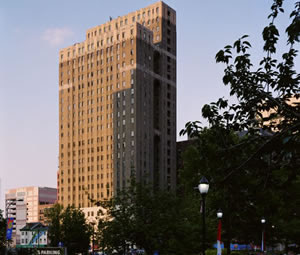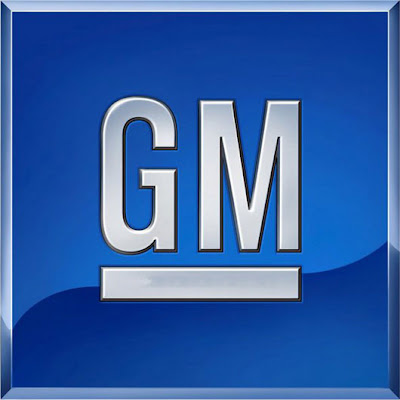Story from Yahoo! News
When the housing market began collapsing across the developed world, commercial real estate remained a bastion for builders. But now the global recession is dragging it down, too. Central business districts that only a year ago were crowded with construction projects are emptying out as office tenants cut staff and operations. Building values are sinking, while delinquencies on securitized loans have tripled in the past six months.
 The abrupt downturn in commercial real estate is punishing cities as varied as Detroit, Dallas, and Hartford, where downtown office vacancy rates top 20%. Unoccupied space is piling up quickly in San Antonio, Las Vegas, Charlotte, and San Jose. Outside the U.S., high-profile towers have been halted everywhere from Dubai to Santiago, Chile.
The abrupt downturn in commercial real estate is punishing cities as varied as Detroit, Dallas, and Hartford, where downtown office vacancy rates top 20%. Unoccupied space is piling up quickly in San Antonio, Las Vegas, Charlotte, and San Jose. Outside the U.S., high-profile towers have been halted everywhere from Dubai to Santiago, Chile.New York, though, may be the epicenter of the bust. The world's biggest office market, with roughly 350 million square feet of floor space, New York added 2.9 million square feet of vacant property in 2009's first quarter alone -- more than the entire Empire State Building. In that same period, calculates commercial real estate brokerage CB Richard Ellis (NYSE:CBG - News), rents slid 14.6% to an average of $57.35 per square foot, the largest quarterly drop on record.
At 8.5%, New York's office vacancy rate is still well under the U.S. average of 14.7%. But with virtually no demand for new space, that percentage is likely to hit double digits within months, putting New York's recovery well behind that of cities such as London, where some analysts and investors think the worst may be over.
Tenants Wanted
Steven J. Pozycki could add to the glut in New York next year. Pozycki, founder of SJP Properties in Parsippany, N.J., is plugging away at a 40-story tower in Midtown Manhattan with 1.1 million square feet of space. The $1 billion project, a joint venture with Prudential Real Estate Investors, was started in early 2007, when property values were still soaring and vacancy rates were at all-time lows. It is scheduled to open next spring but has yet to find a single tenant.
The developer had intended to anchor his building, known as 11 Times Square, with financial companies and law firms. After these would-be renters began teetering, several other developers canceled projects at earlier stages. Boston Properties (NYSE:BXP - News) called off plans for a nearby tower in March. A few weeks later, developer Larry Silverstein said he may delay construction at the World Trade Center site for decades. But Pozycki says that by last fall construction on his site had gone "past the point of no return."
The slide in the office sector mirrors trouble throughout the nonresidential real estate industry. On Apr. 16, General Growth Properties (GGP.), the nation's second-largest mall operator, with 200 shopping centers, filed for bankruptcy. MGM Mirage (NYSE:MGM - News), which is erecting an $8.6 billion complex of stores, offices, hotels, and a casino on the Las Vegas Strip, came close to default this spring. In New Orleans, a $400 million Trump International Hotel & Tower is now on hold until the credit market rebounds.
With homebuilding moribund -- the sector is at its weakest in 50 years -- it's no surprise the U.S. has been shedding more than 100,000 construction jobs a month since December. Meanwhile, new assignments for architecture firms have become all but nonexistent, forcing big names such as New York's Daniel Libeskind to trade down to designing doorknobs and light fixtures.
Putting Work on Hold
Office construction is skidding outside the U.S., as well. Work was halted in March on a Cesar Pelli-designed skyscraper in Santiago, Chile. Building has reportedly stopped on Norman Foster's Russia Tower in Moscow. And many Persian Gulf projects that were green-lighted when oil topped $100 a barrel have been shelved, including the kilometer-high Nakheel Tower in Dubai. "We've had several projects in Dubai that have basically been put on hold until further notice," says Daniel Kaplan, a senior partner at architecture firm FXFowle.
The financial impact will spread. The commercial real estate debt market in the U.S., valued at $3.4 trillion, is three times larger than it was in the early 1990s, creating the potential for huge losses as defaults and bankruptcies rise. Already, delinquencies on commercial mortgage-backed securities have jumped from $3.48 billion in February 2008 to $11.99 billion a year later, and a report from Deutsche Bank (NYSE:DB - News) forecasts they will swell to at least $24 billion before 2010. "It's like subprime," says Richard Parkus, head of CMBS research at Deutsche Bank. "Knowing what's in the delinquency pipeline, we can predict a dramatic rise in defaults."
The expected upsurge is due, in part, to timing. A huge share of commercial mortgages was taken out in the mid-2000s, when building prices were rising to record highs and the loan-to-value ratio was around 90%. Many must be refinanced this year. These days the maximum loan-to-value ratio has fallen to 65%, while property values are plunging. On Mar. 31, for example, the John Hancock Tower in Boston was auctioned off for $660 million -- half the amount a private equity firm shelled out for the property three years ago.
London, Harbinger of Hope
Of course, real estate is a cyclical business. Many of today's troubled office markets were hurt badly in the U.S. recessions in 1990 and 2001. But within a few years, as a halt in construction constrained supply, and businesses began to require more space, vacancy rates shrank, rents climbed, and developers started breaking ground on new towers and Philadelphia apartments.
Some real estate brokers are looking to London for signs of a turnaround. Prices there may be stabilizing after falling nearly 30% in 2008. As a result, equity buyers are emerging to snap up deals, encouraged by the weaker British pound. Hessam Nadji, director of research at real estate brokers Marcus & Millichap, thinks the U.S. may be less than 18 months from leveling off, too. "If there's moderate economic stabilization," he says, "we could see that translate into new demand for commercial office space in mid- or late 2010."
Should that happen, Pozycki's SJP might be positioned well. None of its properties has a loan coming due in the next year or two. Most of the Midtown office buildings that 11 Times Square is competing with date to the mid-20th century. And no other towers are expected to open nearby before 2014. He also has plenty of space.



























